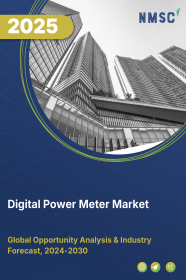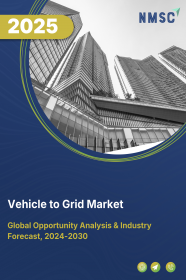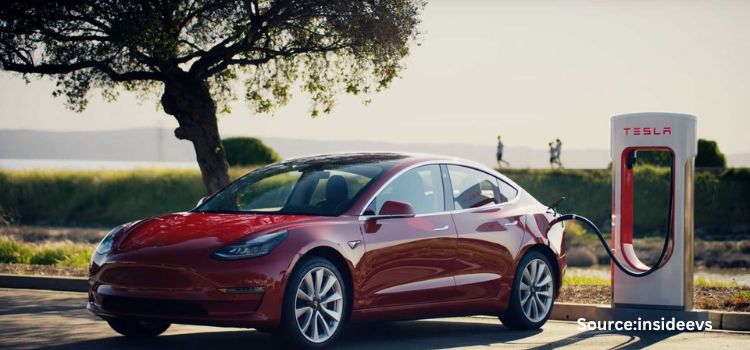
Used Lead Acid Batteries (ULAB) Market by Battery Type (Flooded Lead Acid Battery, Sealed Lead Acid Batteries, Deep Cycle Lead Acid Battery, and Others), by Method (Collection and Segregation, Hydrometallurgical Treatment, Pyrometallurgical Treatment, and Neutralisation of Acid), and by End-User Industry (Industrial, Commercial, Transportation, and Others) – Global Opportunity Analysis and Industry Forecast 2025–2030
US Tariff Impact on Used Lead Acid Batteries (ULAB) Market
Trump Tariffs Are Reshaping Global Business
Used Lead Acid Batteries (ULAB) Market Overview
The global Used Lead Acid Batteries (ULAB) Market size was valued at USD XX billion in 2024 and is predicted to reach USD XX billion by the end of 2025. The industry is predicted to reach USD XX billion by 2030 with a CAGR of XX% from 2025 to 2030.
The used lead acid battery (ULAB) market is witnessing rapid transformation driven by rising environmental regulations, growth in electric mobility, and the expansion of circular economy practices. Among the top trends are the formalization of battery recycling processes, technological innovations in lead recovery, and the push toward extended producer responsibility (EPR). Key drivers include the surging demand for secondary lead, cost benefits of recycling over mining, and the increasing volume of battery scrap from the automotive and energy sectors. However, the market faces significant hurdles like the dominance of informal recycling networks and regulatory inconsistencies across regions. On the contrary, AI-driven advancements create opportunity for market growth.
Rising Demand for Secondary Lead Fuels Used Lead Acid Batteries (ULAB) Market Growth
The industry is witnessing a steady shift toward secondary production, with recycled lead contributing to more than half of the total supply. Lead recovered from used lead acid batteries (ULABs) is widely utilized across grid energy storage, automotive systems, and power backup applications. Due to its lower energy requirements compared to primary lead, secondary lead offers a cost-efficient and sustainable alternative. Leading players such as Gravita India and Exide Industries are expanding their recycling operations to align with market demand and environmental objectives.
Surging Battery Waste from Mobility and Power Applications Fuels Market Growth
The increasing adoption of electric vehicles, inverters, and solar energy systems is contributing to a significant rise in the generation of used lead-acid batteries (ULABs). As reported by the Battery Council International, more than 3 million metric tons of ULABs are produced each year. In high-growth regions such as Southeast Asia and Africa, expanding electrification and deployment of off-grid solar solutions are further accelerating ULAB volumes, strengthening the supply chain for recyclers and supporting the overall growth of the industry.
Cost Advantages of Recycling Over Traditional Lead Extraction Drive Used Lead Acid Batteries (ULAB) Market Growth
Recycling used lead-acid batteries (ULABs) delivers significant advantages in terms of both operational efficiency and environmental impact. Extracting lead from virgin sources involves high capital expenditure and poses serious environmental risks. In contrast, advanced recycling facilities, such as Amara Raja’s plant in India, achieve recovery rates of up to 98%, enhancing cost-effectiveness and resource efficiency. As the gap between primary and secondary lead economics widens, ESG-driven procurement strategies are increasingly favoring recyclers with sustainable practices, enabling them to capture a stronger market share.
Informal Recycling Practices Pose Health and Environmental Risks Hinder Market Growth
Informal recycling continues to play a significant role in low and middle-income economies, where a large portion of used lead acid batteries (ULAB) are processed through unregulated channels. These operations typically use outdated and unsafe methods, which contribute to environmental damage and serious public health concerns due to the release of toxic substances and soil pollution. In some regions, widespread informal activity creates major challenges for the shift toward formal, regulated recycling systems. This not only disrupts efforts to align with international standards but also limits opportunities for sustainable development and long-term industry growth.
AI-Driven Advancements Create Opportunity for Used Lead Acid Batteries (ULAB) Market Growth
Emerging economies are increasingly leveraging artificial intelligence (AI) to modernize their battery recycling infrastructure, aligning with recent policy reforms that promote formal sector engagement. AI-powered technologies such as automated battery sorting systems, predictive maintenance tools, and intelligent logistics optimization are streamlining operations and reducing costs in these markets.
For example, companies entering regions like India, Nigeria, and East Africa are integrating AI-driven data analytics to identify optimal collection routes and forecast material recovery rates, enhancing both efficiency and profitability. This technological edge, combined with supportive policies like India’s EPR framework, positions early adopters to lead in compliance, scalability, and environmental performance. Forward-looking firms, such as Amara Raja and Gravita, are setting benchmarks by deploying smart recycling facilities that use AI to monitor process efficiency and improve yield accuracy, creating a replicable, sustainable model for global expansion.
Market Segmentations and Scope of the Study
The used lead acid batteries (ULAB) market report is segmented on the basis of battery type, method, end-user industry and region. On the basis of battery type, the market is grouped into flooded lead acid battery, sealed lead acid batteries, deep cycle lead acid battery, and others. On the basis of method, the market is divided into collection and segregation, hydrometallurgical treatment, pyrometallurgical treatment, and neutralisation of acid. On the basis of end-user industry, the market is classified into industrial, commercial, transportation, and others. Regional breakdown and analysis of each of the aforesaid segments includes regions comprising of North America, Europe, Asia-Pacific, and RoW.
Geographical Analysis
North America remains a key contributor to the global used lead acid battery market, supported by robust environmental policies, mature recycling infrastructure, and a growing emphasis on circular economy models. The United States and Canada have implemented strict hazardous waste regulations, encouraging both manufacturers and recyclers to invest in sustainable technologies. According to the Battery Council International, the region maintains one of the highest lead battery recycling rates globally, exceeding 99%. Additionally, innovations in desulfation and closed-loop systems are improving the operational efficiency of recycling plants. Market size expansion in North America is also driven by increasing demand for SLI (starting, lighting, and ignition) batteries across the automotive and industrial sectors, which continues to create a steady inflow of recyclable battery material.
Europe is witnessing significant growth in the used lead acid battery industry due to the region’s ambitious Green Deal targets and Extended Producer Responsibility (EPR) directives. The European Union mandates stringent recycling quotas under its Battery Directive, ensuring that nearly every spent lead acid battery is captured and processed through formal channels. Countries like Germany, France, and the Netherlands are front-runners in adopting advanced recycling technologies, often integrated with real-time tracking and compliance systems. Moreover, the market share for sustainable energy storage solutions in Europe is expanding, driven by the growing number of electric vehicles and industrial backup power systems that eventually feed into the ULAB stream. The push toward environmental stewardship and circularity is expected to increase the industry size and competitiveness across the continent.
Asia-Pacific holds the largest market size in terms of volume for used lead acid batteries, driven by rapid industrialization, rising vehicle ownership, and a growing need for off-grid power solutions. Countries such as China and India are the primary contributors, with India alone generating over 270,000 tons of ULAB annually. While informal recycling practices have traditionally dominated, governments are now taking significant steps to formalize the sector. India’s EPR guidelines and real-time tracking mechanisms by the Central Pollution Control Board (CPCB) are reshaping the market landscape. In China, enhanced government supervision and investment in automation are curbing illegal dumping and boosting market share for licensed recyclers. The region presents high growth potential as regulatory compliance improves and infrastructure investments gain momentum.
In regions categorized under Rest of the World (RoW), including Africa, Latin America, and the Middle East, the used lead acid battery market is undergoing a pivotal transformation. Historically plagued by informal and hazardous recycling practices, these regions are now embracing policy-led formalization. Africa, in particular, is seeing a surge in international support to upgrade its recycling ecosystem. Nigeria’s policy frameworks and initiatives like the UNEP-backed “Lead-Free Future” are laying the groundwork for safer battery management. In Latin America, Brazil and Mexico are expanding their lead recovery capacities with new public-private partnerships. The market trends indicate rising foreign direct investment and technology transfer, enhancing environmental outcomes and industry competitiveness. With growing awareness and support from global agencies, these regions are poised to unlock substantial market growth.
Strategic Expansions and Innovations in the ULAB Industry
Key players in the global used lead acid battery (ULAB) industry are actively pursuing strategic expansions, technological upgrades, and partnerships to navigate evolving regulatory landscapes and tap into emerging market opportunities. Companies such as Gravita India, Exide Industries, and EnerSys are investing in closed-loop recycling systems, AI-enabled tracking, and real-time compliance technologies to enhance operational transparency and environmental performance.
For instance, Gravita’s 2023 expansion into Tanzania and Senegal reflects a growing trend among recyclers to enter underserved regions with policy incentives and high-volume potential. Despite these advances, players face persistent challenges such as the dominance of informal recycling sectors, hazardous working conditions, and fluctuating lead prices that impact profitability and long-term planning.
However, the shift toward Extended Producer Responsibility (EPR) frameworks in countries like India, along with growing support from multilateral environmental programs, presents significant opportunities. Additionally, the push for battery circularity and improved lead recovery efficiency is driving innovation in desulfation techniques and sustainable material processing. As global trends increasingly favor formalized and transparent operations, companies that align with ESG goals and expand their presence across regions are well-positioned to capitalize on the evolving potential of the ULAB industry.
Key Benefits
-
The report provides quantitative analysis and estimations of the used lead acid batteries (ULAB) market from 2025 to 2030, which assists in identifying the prevailing market opportunities.
-
The study comprises a deep-dive analysis of used lead acid batteries (ULAB) market including the current and future trends to depict prevalent investment pockets in the market.
-
Information related to key drivers, restraints, and opportunities and their impact on the used lead acid batteries (ULAB) market is provided in the report.
-
Competitive analysis of the players, along with their market share is provided in the report.
-
SWOT analysis and Porters Five Forces model is elaborated in the study.
-
Value chain analysis in the market study provides a clear picture of roles of stakeholders.
Used Lead Acid Batteries (ULAB) Market Key Segments
By Battery Type
-
Flooded Lead Acid Battery
-
Sealed Lead Acid Batteries
-
Deep Cycle Lead Acid Battery
-
Others
By Method
-
Collection and Segregation
-
Hydrometallurgical Treatment
-
Pyrometallurgical Treatment
-
Neutralisation of Acid
By End-User Industry
-
Industrial
-
Commercial
-
Transportation
-
Others
By Region
-
North America
-
The U.S.
-
Canada
-
Mexico
-
-
Europe
-
The U.K.
-
Germany
-
France
-
Italy
-
Spain
-
Denmark
-
Netherlands
-
Finland
-
Sweden
-
Norway
-
Russia
-
Rest of Europe
-
-
Asia-Pacific
-
China
-
Japan
-
India
-
South Korea
-
Australia
-
Indonesia
-
Singapore
-
Taiwan
-
Thailand
-
Rest of Asia-Pacific
-
-
RoW
-
Latin America
-
Middle East
-
Africa
-
Key Players
-
EnerSys
-
Tianneng Holding Group
-
Exide Industries Ltd.
-
STC S.r.l.
-
Nederman Holding AB
-
Interstate Battery System of America, Inc.
-
The Doe Run Resources Corporation
-
Terrapure BR Ltd.
-
The Remet Company Ltd.
-
Gravita India Limited
-
Boliden AB
-
Olympia Group
-
Shuangdeng Group Co. Ltd.
-
C&D Technologies, Inc.
-
Power Sonic Corporation
REPORT SCOPE AND SEGMENTATION:
|
Parameters |
Details |
|
Market Size in 2024 |
USD XX Billion |
|
Revenue Forecast in 2030 |
USD XX Billion |
|
Growth Rate |
CAGR of XX% from 2025 to 2030 |
|
Analysis Period |
2024–2030 |
|
Base Year Considered |
2024 |
|
Forecast Period |
2025–2030 |
|
Market Size Estimation |
Billion (USD) |
|
Growth Factors |
|
|
Countries Covered |
28 |
|
Companies Profiled |
15 |
|
Market Share |
Available for 10 companies |
|
Customization Scope |
Free customization (equivalent to up to 80 working hours of analysts) after purchase. Addition or alteration to country, regional, and segment scope. |
|
Pricing and Purchase Options |
Avail customized purchase options to meet your exact research needs. |

















 Speak to Our Analyst
Speak to Our Analyst





















